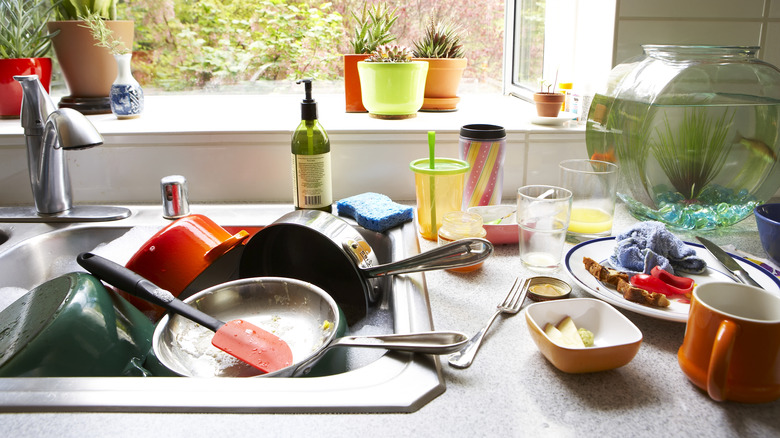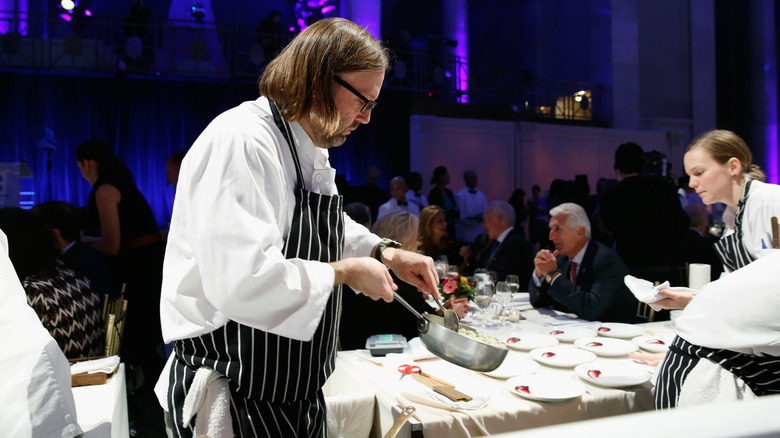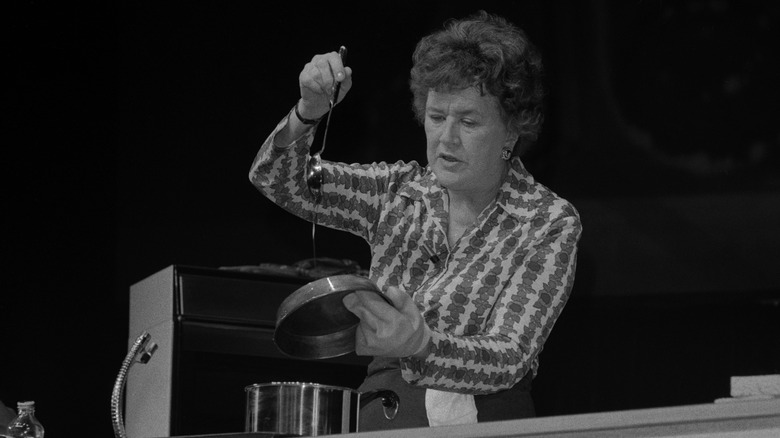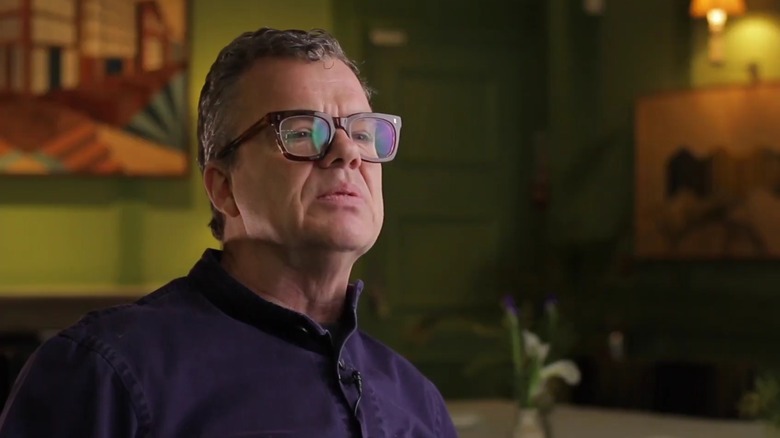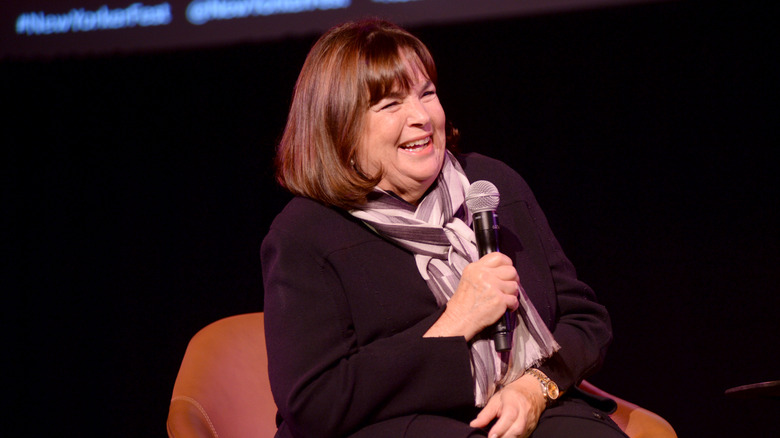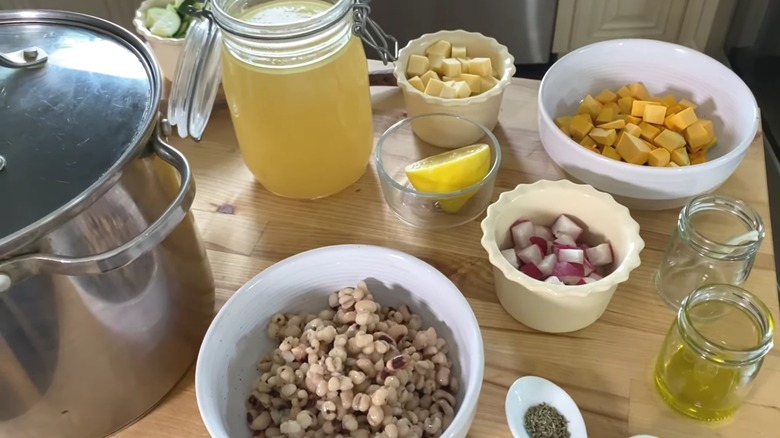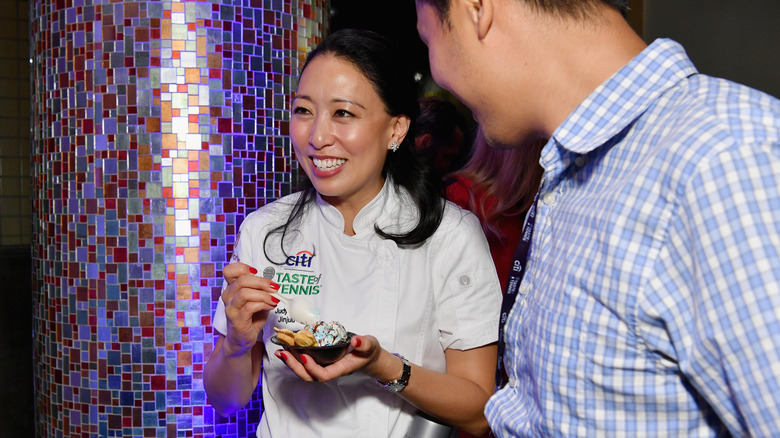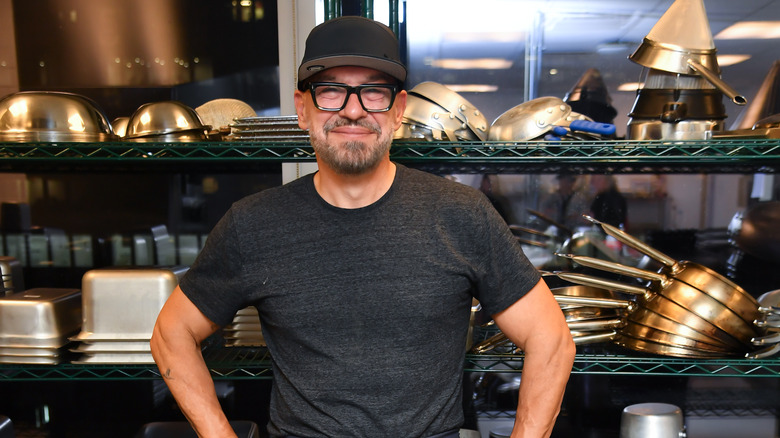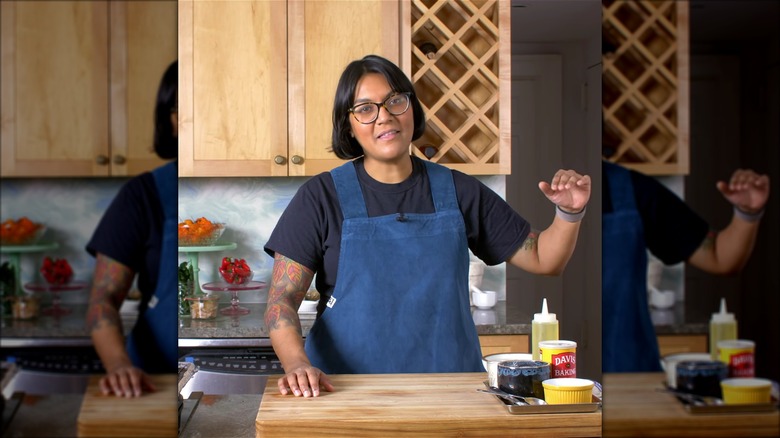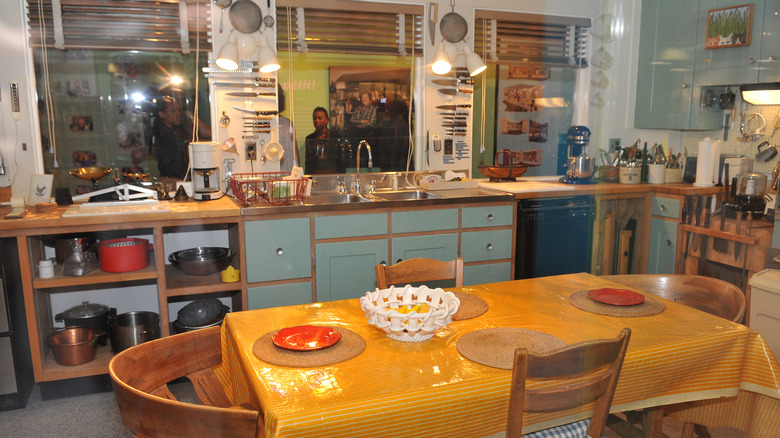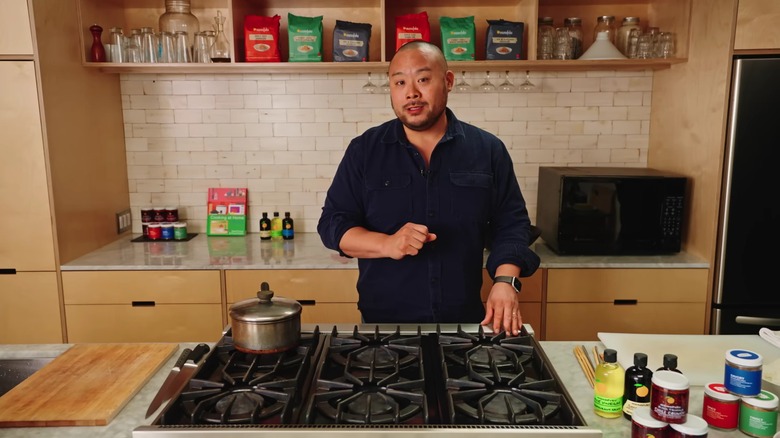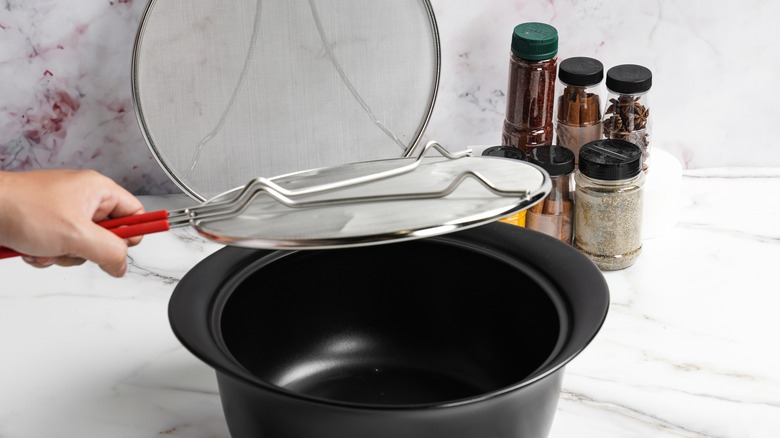How Celebrity Chefs Really Keep Their Kitchens Spotless
A report commissioned by Mintel found that 96% of American adults cooked at home during 2022. Many of these individuals had found themselves spending more time in the kitchen as a direct result of the COVID-19 pandemic. Once the pandemic abated, many continued to cook as a means of saving money. CNET has estimated that cooking at home can save you up to 50% versus ordering takeout. This number jumps to 75% when home cooking is compared to getting food delivered.
While many of us enjoy cooking, fewer are the people who enjoy cleaning up afterward. In fact, cleaning the dishes was ranked by American couples as one of the worst chores in a survey conducted by Yelp and disseminated by SWNS Media Group. However, keeping the kitchen spotless does not have to be a painful struggle. The following tips from celebrity chefs prove as much and, if followed, will transform the arduous task of kitchen cleaning into a breeze.
Jamie Oliver prioritizes an organized refrigerator
British celebrity chef Jamie Oliver makes sure that his refrigerator stays organized. As a trained chef, Oliver organizes his refrigerator based on temperature. As he explained to The Daily Mail, "The temperature varies in any fridge as heat rises, so keep your meat and fish in the cooler part at the bottom, and foods like dairy in the middle." Utilizing such an order not only helps all foodstuffs remain at their best for the longest duration but also allows home cooks to know exactly where their food is. In turn, this ensures that cooks do not cause a mess emptying the refrigerator when looking for a single ingredient.
Oliver boasts a similarly structured system for his freezer, with all food placed into bags labeled with the food's name and the date it was frozen. Organizing both the fridge and freezer in this manner not only allows for easy use but also reduces the amount of food that is forgotten and left to go bad. As a result, kitchens with an organized refrigerator and freezer remain substantially cleaner — and more sanitary — than those without.
Wylie Dufresne cleans as he goes
The tip most often repeated by celebrity chefs is to clean as you go. Simply put, this means cleaning during the cooking process instead of allowing the dirty dishes and utensils to pile up and be dealt with afterward. In an interview with NPR, James Beard Award-winning chef Wylie Dufresne said, "Isn't the worst thing at the end of a successful dinner party doing a whole bunch of dishes? Wouldn't you rather break them all and buy new ones? It actually saves time if you clean as you go. It makes life so much easier." Numerous other chefs claim further benefits, stating that working clean will improve the final dish by instilling a sense of pride and discipline into the cook.
Despite the benefits of cleaning as you go, not everyone is keen on the practice, especially those who have not had it drilled into them in either culinary school or professional kitchens. Jay Rayner, one of Britain's foremost food critics, was one of the people who preferred to clean the mess after cooking. However, as he detailed in an article he wrote for The Guardian, after eventually adopting the "clean as you go" mantra, Rayner has not looked back, claiming it has made cooking, cleaning, and even eating more enjoyable. Such ringing endorsements suggest that cleaning as you go is an essential skill to master.
Julia Child reused cutlery when cooking
Julia Child believed in working clean, no surprise given that her culinary exploits were often filmed and broadcast around the United States. One of the simplest ways Child minimized mess while cooking was to clean her utensils between tasks. She did this by dropping them in a saucepan of water that was simmering on the stove. By doing this, Child not only prevented food from drying onto the utensils but also drastically reduced how many she used; washing and reusing a utensil is much more efficient than using and discarding multiple.
Cleaning and sanitizing utensils between uses is especially important if they have been used for tasting. Chefs in professional settings often use disposable tasting spoons or have a stack of teaspoons that they use once before handing over to the pot wash. This is because using a utensil to taste food more than once is forbidden by the United States Public Health Service. Child's technique is the perfect middle ground for home cooks who don't want to create heaps of washing up but also want to maintain good food hygiene practices.
Jeremy Lee uses bowls to catch waste
Well-loved British chef and food writer Jeremy Lee has been the head chef at Soho's Quo Vadis since 2012. During this time, he has nurtured many a burgeoning chef, and one tip he always relays to them is the importance of using bowls to catch waste. In an interview with The Guardian, Lee used the preparation of artichokes as an example to explain how useful bowls are in keeping a kitchen clean: "You can whittle away without having this awful mess on the table and everything going on the floor. I'm constantly putting bowls in front of cooks. It helps enormously."
Aside from catching the peelings, bowls should also be used to store the prepared food. This technique prevents the cutting board from becoming crowded and allows a cook to keep their prepared ingredients separate and ready for use. What's more, bowls that have only been used to store prepped, raw vegetables only require a quick rinse to clean.
Ina Garten relies on the dishwasher
Like many home cooks, Ina Garten relies on technology to help keep her kitchen spotless and has sung the praises of dishwashers on multiple occasions. In fact, as she revealed in an interview with The Globe and Mail, Garten is the proud owner of four dishwashers, two located in her home kitchen and two in her studio kitchen. According to Garten, she needs all four of them to keep on top of the mountain of dirty dishes she creates while cooking.
Garten seems to adopt a mentality wherein the dishwasher is used to clean just about everything, except cast iron pans. A photo Garten posted to Instagram caused a stir, as it revealed that she placed both her knives and silicone spatulas in the dishwasher. This goes against advice from companies such as Wüsthof, which state their products should not be placed in the dishwasher lest the high temperatures damage them. Garten, however, clearly prioritizes a speedy and efficient cleaning process over such concerns. A spotless kitchen is her reward.
Dwayne LiPuma always has mise en place in mind
Mise en place is the practice of having everything ready before you start cooking; ingredients are prepped, oils are out, and salt and pepper are close to hand. Having everything organized in this manner essentially allows cooks to focus on the cooking process. They can, for example, calmly watch the onions as they brown instead of furtively glancing over their shoulder while performing other tasks.
Dwayne LiPuma, assistant professor at the Culinary Institute of America, explained the goal of mise en place to NPR: "Every component of one single dish is in one single corner so their hand literally moves inches. Once [students] set up their station I should be able to blindfold them ... they should know that their tongs are always here, their oil is always right here."
By knowing exactly where everything is, cooks work not only quicker but cleaner. Ingredients and tools are not strewn about the kitchen, tasks are not abandoned partway, and the spills and splodges associated with cooking and preparing occur one-by-one instead of simultaneously. What's more, having good mise en place makes cooking a calmer process, which will only improve a kitchen's cleanliness.
Judy Joo cleans her grill with an onion
Grilling is a pastime beloved by numerous Americans. However, cleaning the grill is a chore many prefer to avoid. This is for good reason; the baked-on grit and grime can be a real pain to remove. What's more, grills can be a haven for bacteria, making regular, thorough, and effective cleaning all the more important. Thankfully, chef Judy Joo has a neat trick that makes cleaning dirt-covered grills a breeze: Simply rub it with a halved onion.
As Joo explained to The Independent, "Onions have anti-bacterial properties so when rubbed on a heated grill it helps remove grit and grime. And, the onion's natural oils create a non-stick coating on the grates." This will certainly help in cleaning a grill, especially when it has already been preheated. Cleaning should be done after every use, ensuring the grill is ready to be fired up in the future.
Michael Symon uses specialist cleaners on his cookware
Unfortunately, not all cookware and appliances can be cleaned with an onion. With their enamel coating, Dutch ovens often pose a challenge, clinging onto stains long after they have been soaked and wiped. In these instances, celebrity chef Michael Symon encourages the use of specialist cleaners, particularly Bar Keepers Friend.
Bar Keepers Friend is a brand of widely available industrial cleaning products. When it comes to Dutch ovens, one of the brand's best products is Soft Cleanser. This product is so effective at cleaning Dutch ovens that Staub, a prominent maker of Dutch ovens, recommends its use. All people need to do is rub the cleaner onto the stubborn stains and rinse within a minute. The end result is a Dutch oven that looks brand new. Thankfully, the product is both widely available and cheap. Walmart sells one bottle for just under $11, a small price to pay for gleaming cookware.
Sohla El-Waylly uses a large cutting board
When cooking, it's easy to feel cramped. Cleaning as you go and keeping your waste in bowls will help negate this issue, but some people, including culinary star Sohla El-Waylly, prefer to take a different route, using a large cutting board to maximize the space available to them, as she advised in an article she wrote for The New York Times.
There are many reasons to use a large cutting board. Firstly, the space allows cooks the room to move freely, plus uncut ingredients can be piled on one side and prepared ingredients on the other. It also allows cooks to eschew the use of many bowls to separate their prepped ingredients. If the cutting board is large enough, prepped ingredients can simply be piled next to one another. This vastly reduces the amount of washing up; instead of several bowls, only the cutting board needs to be cleaned.
Of course, kitchens should also have other, smaller chopping boards, especially a plastic one that is used to prepare raw meat. However, the vast majority of work can be performed on the large one, minimizing faff and maximizing cleanliness.
Julia Child used two sinks
Aside from sanitizing her cutlery, Julia Child developed further techniques to keep her famous kitchen spotless. One of the best was utilizing a two-sink system, one for food and the other for dishes. This practice is used by commercial restaurants in the United States and abroad, as food safety authorities, including the U.K.'s Food Standards Agency, demand that food is not washed in the same sink where equipment and utensils are cleaned. In these settings, there must be a further sink that's used exclusively for hand-washing.
While Child did not stretch to three sinks, she vigorously enforced her two-sink rule. Tiny labels, stuck onto the wall, declared what was allowed in each sink. This attentiveness not only improved food hygiene but also allowed for quick and efficient work. No matter how messy the kitchen became, Child could still clean and prepare her vegetables as necessary. What's more, soaking pots and pans were not soiled with vegetable offcuts or scraps. As a result, this efficient and effective practice is one we'd advise all home cooks to employ if possible.
David Chang keeps his kitchen sparse
David Chang is a big believer in avoiding unnecessary clutter. He stated in an article he penned for GQ that he's never had a kitchen overflowing with specialist tools. Instead, he focuses on collecting a few versatile pieces of equipment that can perform many jobs. This approach is exemplified by Chang's knife selection. Unlike many chefs, Chang only uses three in his home: a paring knife, a chef's knife, and a serrated bread knife.
Aside from ensuring kitchens remain uncluttered, only having a few select pieces of equipment ensures that great piles of washing do not build up. When you only have three knives, you're forced to wash and reuse instead of casting aside. In contrast, single-use tools, like garlic presses, are much more likely to be left on the side once their job is complete, adding extra mess to the kitchen and making the experience of cooking all the more stressful.
Lidia Bastianich uses splatter screens
Lidia Bastianich is a renowned celebrity chef who cut her teeth by running, and cooking in, many famous restaurants, including Felidia. During her time as a professional chef, Bastianich picked up many clever ways of reducing mess in the kitchen. The use of splatter screens is one of these.
Often called splatter guards, these contraptions work much like a lid, sitting on top of the pan. Made from a fine mesh, the screen prevents oil from spitting across the kitchen, all while allowing moisture and steam to escape. This results in food that crisps up without making a mess of the entire workspace.
Speaking to KLCS Public Media, Bastianich said, "If you're frying or searing something, they have those mesh covers, so I use those and they catch the splatter. Then of course you have to wash that. ... But I think clean as you go, sometimes as it splatters, I have a tissue and I go around and I clean it." While not a mess-free process, using fryer covers definitely helps reduce the mess associated with sautéing and frying.
